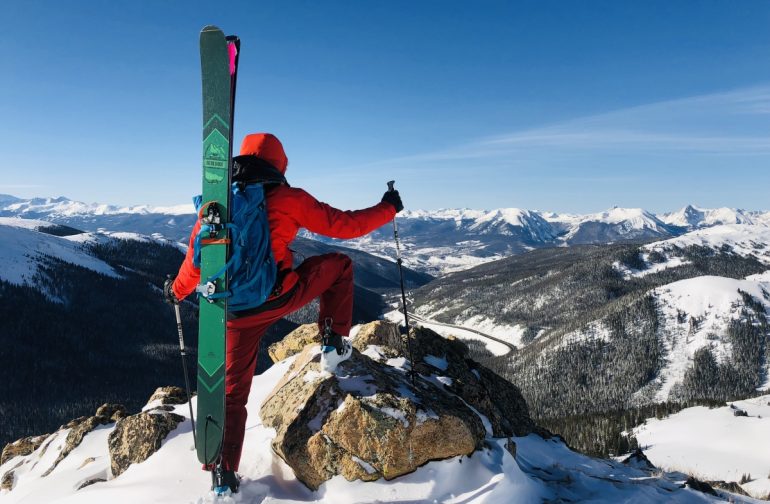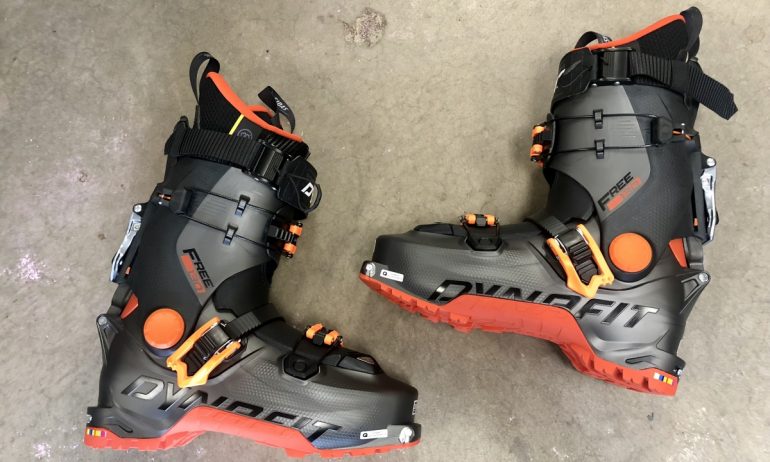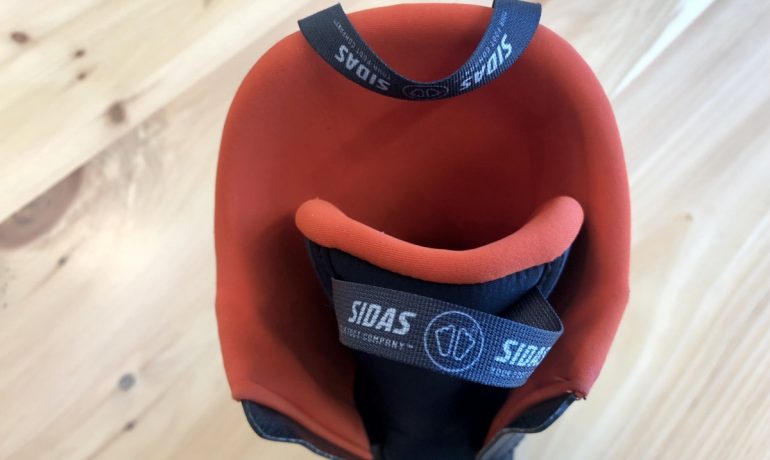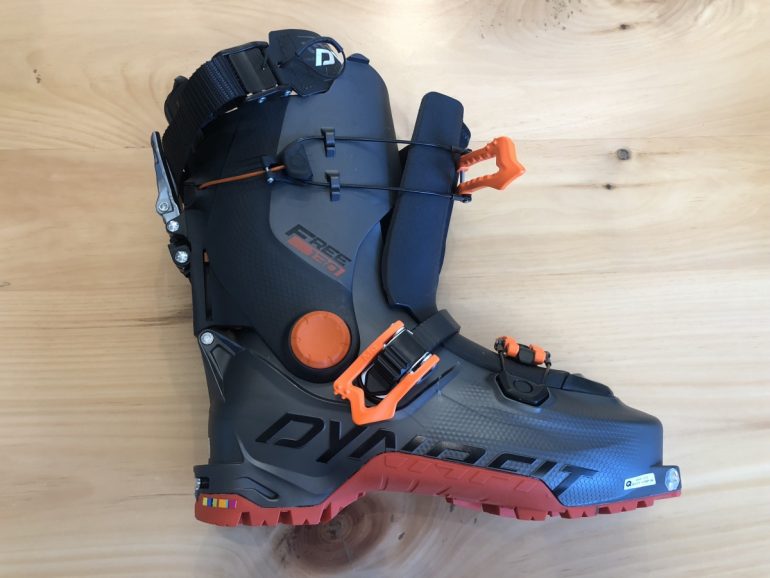Long-awaited Hoji Free comes to life
With the then-new Hoji Pro Tour boots on my feet, I climbed up a basin while staring at the Continental Divide that loomed before my ski partner and I. I pointed at the bowl of freshly fallen snow in front of us. “When we ski here we usually just set kick turns right up the gut,” I told my ski partner, “but this new snow has me a little concerned.”
“I am normally pretty conservative with my line choice, especially in a new area,” he replied. “I would feel more comfortable sticking to the ridgeline.”
We shouldered our skis as we pulled onto the rocky ridge, trading efficiency of movement for personal safety. From the less-stressful vantage of the ridgeline, we could divert the conversation from safety concerns to my favorite topic: gear.
My ski partner was incredibly excited about the new Hoji boots, especially as we scrambled over rocks and tested them in true ski touring fashion. That Speed Nose managed a steep boot pack fine, he said, but he worried that the lack of a toe welt would limit the boot’s wide acceptance. He also wished the boot cuff was just a bit higher and the flex just a bit stiffer, but otherwise absolutely loved the boot in every touring application.
We snapped some selfies and it was time to see how these boots really skied. It was a dawn patrol morning and my ski partner was Eric Hjorleifson, the man behind the Hoji. He was visiting Colorado for a few days en route to ISPO to unveil his new boot at the European tradeshow.
Flex: 130
Available Sizes: 25-29.5
Last: 102
Range of motion: 55 degrees
Forward lean: 11 degrees (The specs claim 17 degrees, but this is only adjustable through a spoiler)
Buckles: 3
Power Strap: Ultra Lock Strap
Sole: Pomoca Rubber Sole
Binding Compatibility: DIN/ISO 9523 Compliant. Fits most all touring bindings and some MNC Alpine Bindings
MSRP: $899.95
Where to buy: Cripple Creek Backcountry
The Hoji Pro Tour was the first step in an impressive move to the new lock system that bears his name. As we covered extensively with the Pro Tour, the “Hoji Lock” effectively welds the upper cuff to the lower shell when in ski mode, but with one flick, the system engages effortlessly in free pivot mode. Hoji explained to me that the Pro Tour was not supposed to be a freeride boot, but rather a touring boot that skied well. Dynafit has long been a company known for the up, so it was important to create a lighter boot that had the Speed Nose, consistent with the TLT7 and PDG, that allows for a more natural stride by moving the pivot point back on the boot. During the day skiing with Hoji, he alluded to another boot in the works that would truly be his pro model, but the world would have to wait to see.
Enter the much anticipated Hoji Free, the final draft, now ready for the public to purchase. The boot’s additional bells and whistles boost its weight to a confirmed 1575 grams for a 26.5, as opposed to my 1386 gram Hoji Pro. With the added weight comes the coveted DIN/ISO 9523 sole offering a modified heel shape and the addition of an official toe welt. Yes, you can now use these downhill monsters with the Marker Kingpin or even a Salomon Shift, or throw on your regular double-bail crampons you’ve been missing. Although clearly geared for ski performance, the 55-degrees of cuff articulation is designed to keep you striding uphill more efficiently than many other boots in its weight class.
I was actually able to take this boot for a few spins last year, but the test liner was almost unbearable and I stripped it out to test it with a liner from another boot. For the retail version, Dynafit replaced their proprietary plug liner with a Sidas thermoformable performance liner. This feels immediately better on my foot then what they offered for testing last year, though I have yet to experience the merits of this new liner in the field.
For comparison, the Atomic Hawx 130 (1430 grams) and Tecnica Zero-G Tour Pro (1315 grams) are lighter versions of beefy four buckle touring boots. True alpine boots with a walk mode have come in significantly heavier, such as the Lange XT (1840 grams) and the Dalbello Sports Lupo (1786 grams). The Hoji Free finds itself firmly in the middle of the pack with the genius Hoji Lock giving this boot the real advantage. The most noticeable performance boost while ski testing came from the cuff and the lower operating as one cohesive unit when powering through turns. Read our Hoji Lock coverage here to better understand why the boot does not bulge out at the sides like conventional touring boots. Even the heaviest “alpine overlap” boots I tested this previous season have some play from the cuff’s ability to hinge over the lower. I am happy to report the Hoji Free has none of this slop.
Hoji’s dream of expanding his design to a wider audience of skiers is well underway with the new binding compatibility, but its touring application in my personal fleet of boots will be limited. The Hoji Free fills that cross-over slot nicely that so many skiers harder charging than I have been clamoring for.
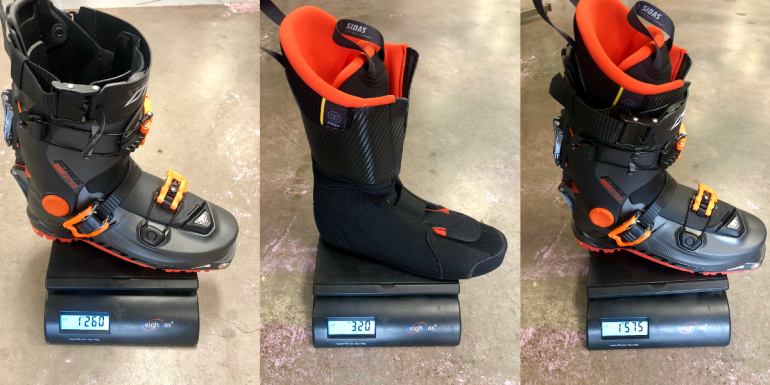
1260 grams for the shell, 320 grams for the liner and 1575 grams together. A bit heavier than the listed weight.
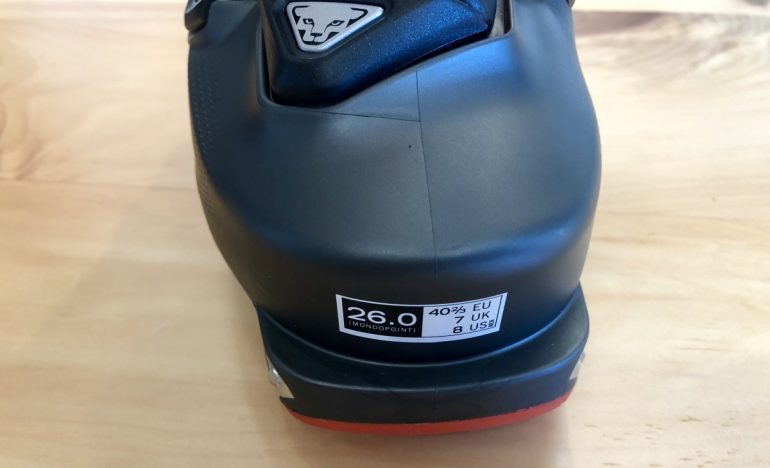
The “missing link”: the toe weld that allows you to interface with all of those non Dynafit bindings and boot crampons.
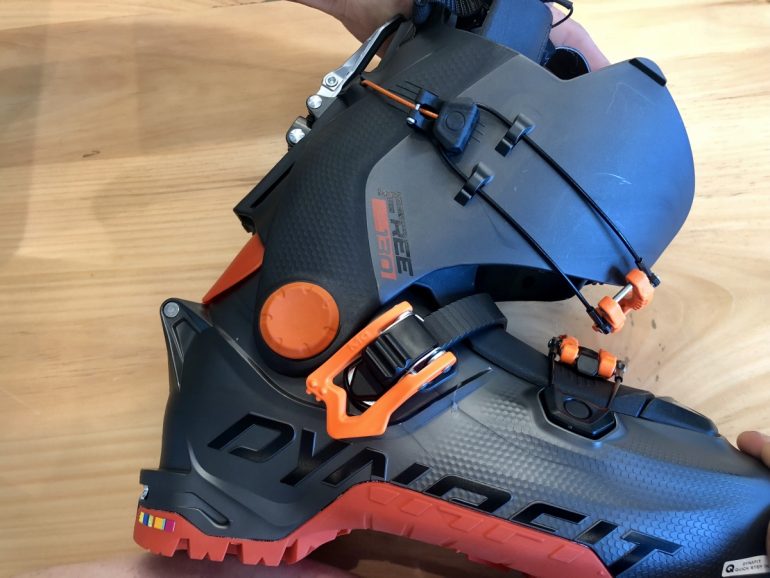
Most of the 55 degrees of cuff articulation come from it’s impressive forward freedom. Great for steeper climbs.
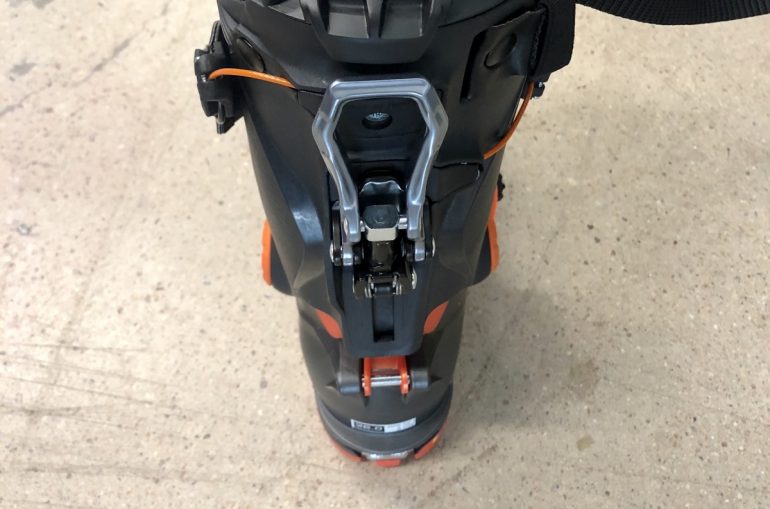
The Hoji Lock is back and better than ever forward lean at 11 degrees but with a spoiler that pushes you to 17 degrees
After covering the sport for many years, I’ve noticed that the downhill performance versus touring efficiency pendulum has a hypnotic rhythm to it. Boots like the Hoji Free and the other freeride touring boots on the scene for the 2019/2020 season clearly show it swinging back to the former. If you are a skier looking for a resort boot that walks well, you will be happy to know even a generally lightweight minded company like Dynafit has a great offering sure to steal some sales from traditional alpine crossover brands. For longer tours I would stick with the Hoji Pro and go even lighter whenever possible.
Doug Stenclik is an avid skimo racer and ski mountaineer who lives for sharing the amazing sports of ski touring and splitboarding. Since his first time on skins he was hooked and the obsession has taken him all over the United States and the world pursuing the human powered ski turn. He founded Cripple Creek Backcountry in 2012 and took over the Colorado Ski Mountaineering Race Cup in 2014 to spread knowledge and the love of the sport. In 2019 he took a step back from the ski shop and race promoter life to become a publishing partner with WildSnow.

